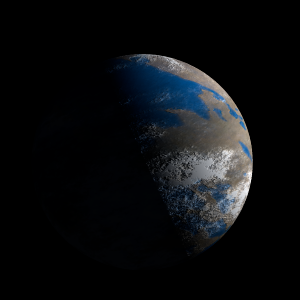|
|
Space Astro
|
Info for exoplanet "Pyejwai-bezya"
| Scientific (actual) data |
|---|
| Name | Kepler-1411 b |
| Planet status | Confirmed |
| Radius | 0.252 |
| Orbital period | 86.1151 |
| Discovered | 2016 |
| Updated | 2021-02-05 |
| Tconj | 2454970 |
| Publication | Announced on a website |
| Detection type | Primary Transit |
| Alternate names | 2MASS J19052677+4257501 b, K03014.01, KIC 7347246 b, KOI-3014 b, KOI-3014.01, WISE J190526.77+425750.0 b |
| Star name | Kepler-1411 |
| Right ascension | 286.36° |
| Declination | 42.96° |
| Mag j | 14.686 |
| Mag h | 14.334 |
| Mag k | 14.237 |
| Star distance | 1431 |
| Star metallicity | -0.04 |
| Star mass | 0.95 |
| Star radius | 0.92 |
| Star age | 4.17 |
| Star temperature | 5664 |
| Star alternate names | 2MASS J19052677+4257501, KIC 7347246, KOI-3014, WISE J190526.77+425750.0 |
| Wikipedia article | Kepler-1411 b |
Back
| |
| Fictional info (?) |
|---|
| Suggested name | Pyejwai-bezya |
| Planet type | Cold planet |
| Having almost no atmosphere to retain heat, it has surface temperatures that vary diurnally more than on any other planet in its solar system, ranging from 50°K (-223°C) at night to 1085°K (812°C) during the day across the equatorial regions.
Because of its rapid rotation, the planet's shape is that of an oblate spheroid (it has a slight but noticeable bulge around the equator). |
| Atmosphere | Helium | 38% |
| Ammonia | 30% |
| Hydrogen deuteride (HD) | 24% |
| Formaldehyde | 4.7% |
| Carbon dioxide | 2.7% |
| Hydrogen chloride | 0.3% |
| Ammonium hydrosulfide (NH4SH) | 0.12% |
| Carbon monoxide | 0.029% |
| Hydrogen | 0.0074% |
| Atmospheric pressure | 20 bar |
 |
| No known satellites |
| Google search for Pyejwai-bezya |
|
Website by Joachim Michaelis
|
|
|
|